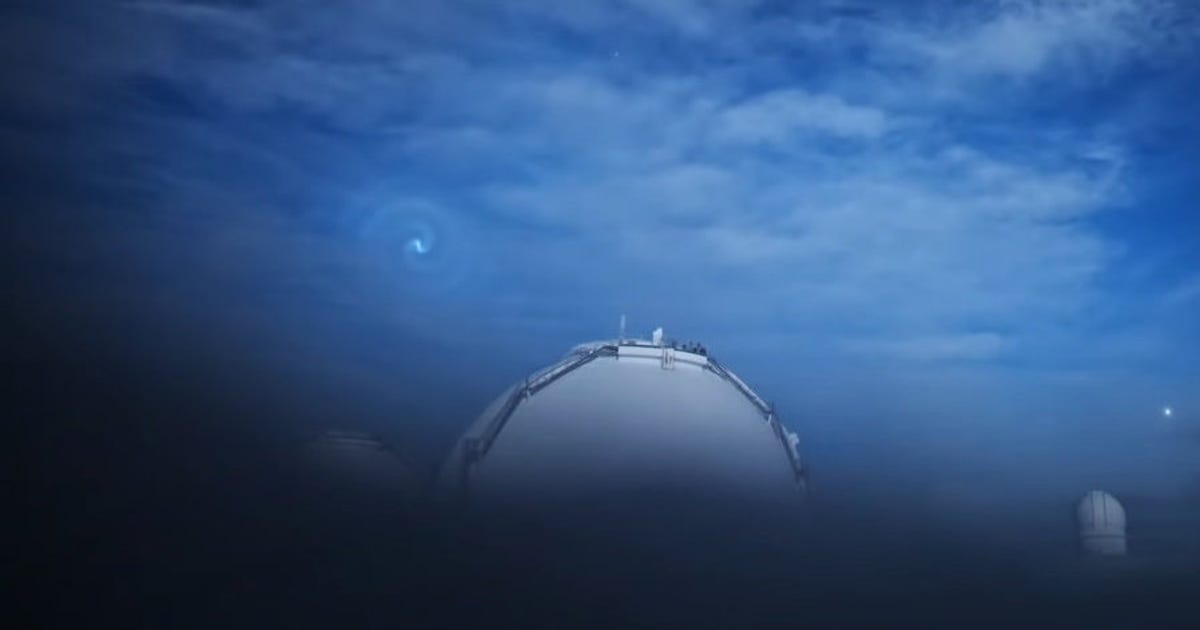‘Mysterious Flying Whirlpool’ in the Sky Was Not a UFO

A livecam at Hawaii’s Subaru Telescope caught sight of a SpaceX second stage on April 17, 2022. It looks like a whirlpool near the left of the frame.
Video screenshot by Amanda Kooser/CNETThe team at the Subaru Telescope on Maunakea in Hawaii is usually focused on discoveries beyond Earth, but footage captured by a livecam from the site on April 17 is turning heads. The video shows a “mysterious flying whirlpool” over Maunakea, but it has nothing to do with UFOs or aliens.
The footage comes from the Subaru-Asahi Star Camera, an outreach project done in collaboration with the Japanese newspaper Asahi Shimbun. It delivers a live feed of the sky so anyone can enjoy the stars at night or view the blue skies and clouds during the day. The telescope facility appears in the camera’s line of sight.
The whirlpool shows up in the video as a swirl flying in from the left and slowly disappearing toward the horizon. The telescope team joked about keeping the origin of the UFO a mystery, but then said it seemed to actually be the falling second stage of a SpaceX Falcon 9 rocket.
SpaceX launched the NROL-85 mission on April 17 from Vandenberg Space Force Base in California. The first stage of Falcon 9 is safely brought back down for reuse while the second stage takes the payload to orbit. The second stage — a disposable part of the rocket system — usually comes back to reenter Earth’s atmosphere over the ocean.
Dutch scientist Marco Langbroek tracks satellites and chimed in on the why the second stage looked like a whirlpool, tweeting that the spiral shape is often seen when a Falcon 9 vents propellants.
The post-deorbit-burn fuel vent from the Falcon 9 upper stage that launched #NROL85 was seen and filmed from Hawaii yesterday.
The spiral shape is often reported with such Falcon 9 stage venting events.
The stage was deorbitted at the end of the 1st rev.https://t.co/USByeGbtPA— Dr Marco Langbroek – 🇺🇦 #vaccinate (@Marco_Langbroek) April 18, 2022
SpaceX has been launching missions at a rapid clip this year. The telescope team called the whirlpool sighting rare, but there could be more of these fun views caught on camera as Falcon 9 launches become ever more routine.


